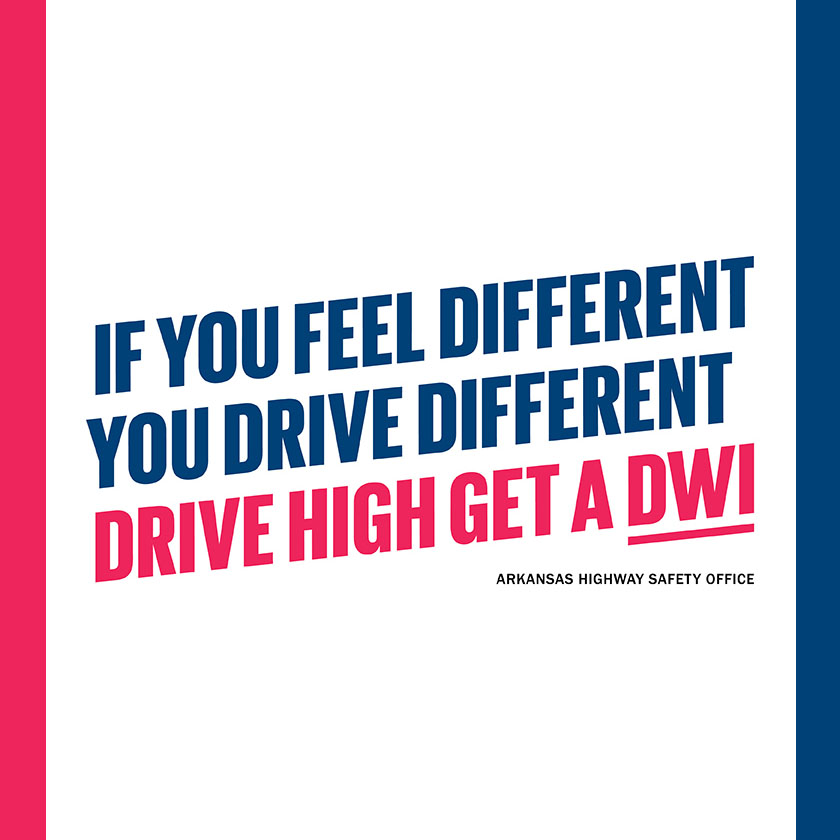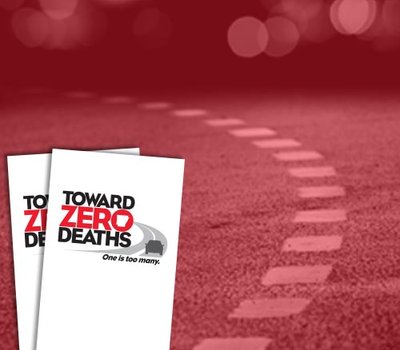Safety Plan
Each year the HSO prepares a data driven Highway Safety Plan that establishes the state’s highway safety goals and objectives and describes the projects recommended for funding during the year. The HSO works closely with local and state governmental entities and others to develop and implement the plan based on traffic crash statistics.
The Highway Safety Plan (HSP) developed by the HSO identifies the traffic related safety problems in Arkansas and recommends programs that are most effective in reducing traffic fatalities, injuries and crashes. For more information on the ASP-HSO and/or Arkansas traffic safety statistics visit: http://www.asp.arkansas.gov/hso/hso_index.html.
The HSO utilizes evidence-based strategies to address the main causes of highway injuries and deaths. These strategies include:
- Utilizing high visibility enforcement of traffic safety laws combined with paid and earned media.
- Using traffic related data to identify and target high risk populations and areas.
- Creating and developing partnerships to magnify our efforts.
In the fight against traffic death and injury, the HSO targets those at high risk for injury which includes but is not limited to: young males between the ages of 18-24; teen drivers; drivers who drive unrestrained or under the influence of alcohol or other drugs; and minority populations.
ASP - HSO’s successful outcomes include the passage of legislation to make Arkansas’ seat belt law a primary law and a Graduated Driver’s License Law to protect teen drivers, reduced drunk driving rates and a steady increase in Arkansas’ seat belt use rate. Some other programs and projects the Arkansas Highway Safety Office administers to reduce fatalities and injuries on Arkansas roadways listed briefly below.
Last Year: 648 crash deaths occurred on Arkansas roads.*
*Preliminary Data - Fatalities as of December 31, 2021
The Arkansas Highway Safety Office coordinates an ongoing statewide behavioral highway safety program making effective use of federal and state highway safety funds and other resources to save lives and reduce injuries on the state’s roads, and provide leadership, innovation and program support in partnership with traffic safety advocates, professionals, organizations and our single largest safety partnership, the driving public. Featured Programs addressing high fatalities on Arkansas roadways are Impaired Driving and Occupant Protection...For more Arkansas Crash Data https://www.dps.arkansas.gov/dashboard/
Read how AHSO is working toward Zero Deaths on Arkansas Roadways: FY 2022 Mobilizations | Impaired Driving | Occupant Protection | Speed Enforcement | Traffic Safety | Motorcycle Safety | Ped/Bike Safety | Teen Driver Safety | Rail & Highway Safety | Move Over Law | Work Zone Safety | S.A.F.E. Driver Pledge | The TZD Blog | STEP Grants | Grants FAQs | Saved By The Belt Stories | Traffic Safety Education
HSP The Planning Process
The Highway Safety planning process, by its nature, is continuous and circular. The process begins by defining and articulating the problems. That stage leads to a collaborative effort and design with partners, which is an ongoing process. Development of performance goals and select measures is the next step followed by specific articulation of the objectives related to the performance goals. The process then requires identification and prioritization in the selection of programs and projects to be funded.
Problem Identification
Those programs and projects results are evaluated and appropriate adjustments are identified in new problem statements. At any one point in time, the Arkansas Highway Safety Office (AHSO) may be working on previous, current and upcoming fiscal year plans. In addition, due to a variety of intervening and often unpredictable factors at both the federal and state level, the planning process may be interrupted by unforeseen events and mandates.
Administration of the HSP
The Arkansas Highway Safety Office (AHSO) administers the State's Highway Safety Plan. Arkansas's Highway Safety Plan is designed to implement grant programs to reduce traffic crashes and the resulting deaths, injuries and property damage. Programs and projects are administered in accordance with uniform guidelines initiated by the National Highway Traffic Safety Administration (NHTSA).
Projects implemented by the AHSO are limited to priority program areas, based on severity of the crash, over-representation, and magnitude of the problem. There are three contributing factors associated with a traffic crash: the roadway and environment, the vehicle, and the driver.
Driver factors (driving after drinking, speeding, not using occupant protection devices, etc.) contribute to some of the most severe traffic crashes. AHSO's highway safety plan seeks to coordinate and unite state and local programs and projects to reduce traffic crashes, deaths, and injuries by focusing on enforcement, enrollment, public information, education, and legislation.
AHSO Safety Plans:
- 2022 Safety Plan
- 2021 Safety Plan
- 2020 Safety Plan
- 2019 Safety Plan
- 2018 Safety Plan
- 2017 Safety Plan
- 2016 Safety Plan
- 2015 Safety Plan
- 2014 Safety Plan
- 2013 Safety Plan
- 2012 Safety Plan
- 2011 Safety Plan
- 2010 Safety Plan
- 2009 Safety Plan
AHSO Annual Reports
The HSO prepares an Annual Report that outlines progress made toward reaching the highway safety goals established in the Highway Safety Plan.
- 2021 Annual Report
- 2020 Annual Report
- 2019 Annual Report
- 2018 Annual Report
- 2017 Annual Report
- 2016 Annual Report
- 2015 Annual Report
- 2014 Annual Report
- 2013 Annual Report
- 2012 Annual Report
- 2011 Annual Report
- 2010 Annual Report
- 2009 Annual Report
Traffic Crash Statistics
The following reports included information about vehicle and motorcycle accidents in a variety of situations such as alcohol related, weather related, road conditions and time of day for both fatal and non-fatal crashes. These reports also include trending for year and age of driver as well as county and city statistics.
- 2014 Traffic Crash Statistics
- 2013 Traffic Crash Statistics
- 2012 Traffic Crash Statistics
- 2011 Traffic Crash Statistics
- 2010 Traffic Crash Statistics
- 2009 Traffic Crash Statistics
- 2008 Traffic Crash Statistics
- 2007 Traffic Crash Statistics (Revised)
- 2006 Traffic Crash Statistics
- 2005 Traffic Crash Statistics
- 2004 Traffic Crash Statistics
- 2003 Traffic Crash Statistics
- 2002 Traffic Crash Statistics
- 2001 Traffic Crash Statistics
What Are High Visibility Law Enforcement (HVE) Mobilizations
The primary focus of high visibility law enforcement activities has been a key ingredient to the success in reducing traffic related injuries and fatalities in Arkansas and across the nation. High visibility law enforcement is defined as periodic high intensity and sustained enforcement efforts, supported by a coordinated media publicity plan. It is critical to let the population know, through appropriate communication strategies, that law enforcement agencies are actively enforcing a specific traffic safety law, such as seat belt and child restraint laws and/or DWI/DUI laws, and that officers are seen by the driving public undertaking these enforcement activities. “Click It or Ticket” and “Drive Sober or Get Pulled Over” are examples of national high visibility mobilizations developed by the NHTSA that were coordinated by the ASP – HSO in Arkansas. Research in traffic safety has shown that integrated marketing communication campaigns that combine strong mass media advertising with strong enforcement and significant publicity about that enforcement in addition to strong community involvement are the most effective. This includes a diverse mix of paid media, sponsorships, public relations, collateral/promotional materials and grassroots outreach to inform the public about the mobilization. Arkansas’ mobilization schedule is available at https://www.dps.arkansas.gov/law-enforcement/arkansas-state-police/services-programs/highway-safety-office/ More information about general traffic safety programs can be obtained by visiting www.trafficsafetymarketing.gov and www.nhtsa.gov.


